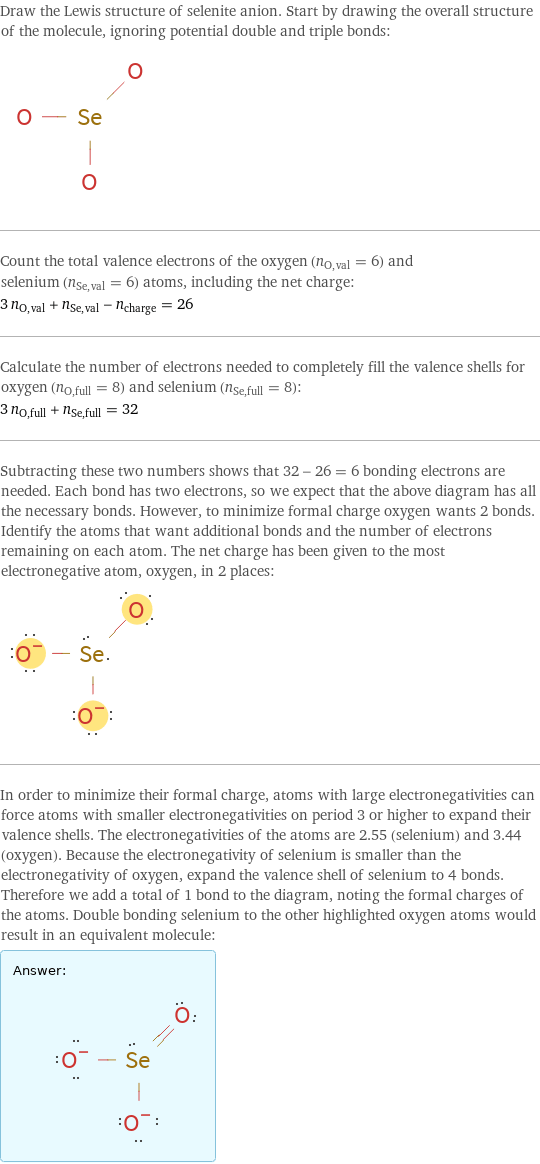Input interpretation

selenite anion
Lewis structure

Draw the Lewis structure of selenite anion. Start by drawing the overall structure of the molecule, ignoring potential double and triple bonds: Count the total valence electrons of the oxygen (n_O, val = 6) and selenium (n_Se, val = 6) atoms, including the net charge: 3 n_O, val + n_Se, val - n_charge = 26 Calculate the number of electrons needed to completely fill the valence shells for oxygen (n_O, full = 8) and selenium (n_Se, full = 8): 3 n_O, full + n_Se, full = 32 Subtracting these two numbers shows that 32 - 26 = 6 bonding electrons are needed. Each bond has two electrons, so we expect that the above diagram has all the necessary bonds. However, to minimize formal charge oxygen wants 2 bonds. Identify the atoms that want additional bonds and the number of electrons remaining on each atom. The net charge has been given to the most electronegative atom, oxygen, in 2 places: In order to minimize their formal charge, atoms with large electronegativities can force atoms with smaller electronegativities on period 3 or higher to expand their valence shells. The electronegativities of the atoms are 2.55 (selenium) and 3.44 (oxygen). Because the electronegativity of selenium is smaller than the electronegativity of oxygen, expand the valence shell of selenium to 4 bonds. Therefore we add a total of 1 bond to the diagram, noting the formal charges of the atoms. Double bonding selenium to the other highlighted oxygen atoms would result in an equivalent molecule: Answer: | |
General properties

formula | (SeO_3)^(2-) net ionic charge | -2 alternate names | trioxoselenate(IV) | trioxidoselenate(IV) | selenite | selenite(2-)
Ionic radius

thermochemical radius | 239 pm
Units

Other properties

ion class | anions | biomolecule ions | oxoanions | polyatomic ions | selenium(IV) ions common sources of ion | sodium selenite (1 eq) | barium selenite (1 eq)
Thermodynamic properties

molar free energy of formation Δ_fG° | aqueous | -369.8 kJ/mol (kilojoules per mole) molar heat of formation Δ_fH° | aqueous | -509.2 kJ/mol (kilojoules per mole) molar entropy S° | aqueous | 13 J/(mol K) (joules per mole kelvin)